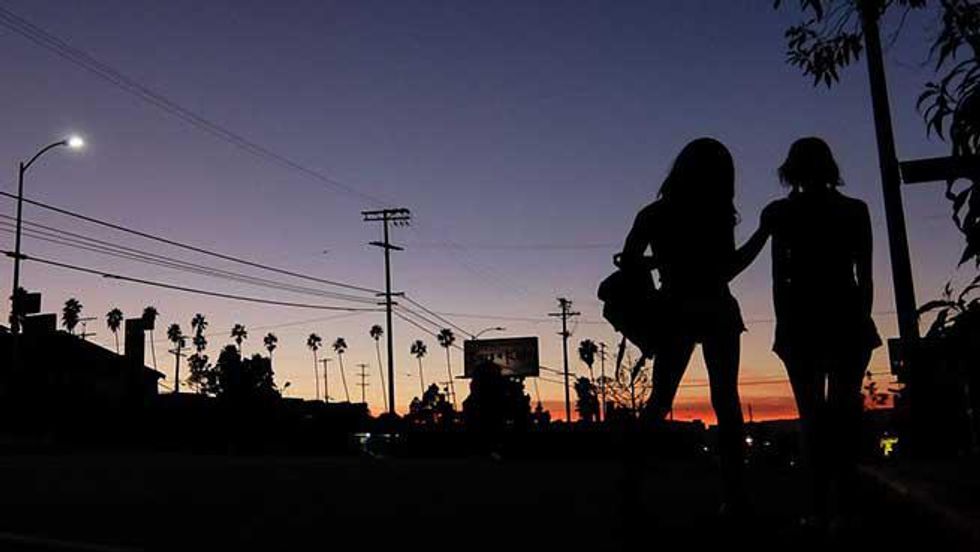It’s not easy for any person of African descent to be LGBTQ in our black communities, but our transgender brothers and sisters might feel the most discrimination.
The National Black Justice Coalition (NBJC), in collaboration with the National Gay and Lesbian task Force and the National Center for Transgender Equality (NCTE) released a groundbreaking study in September called "Injustice at Every Turn: A Look at Black Respondents in the National Transgender Discrimination Survey," exposing both the structural and individual racism transgender people of color confront. The study is a supplement to the national study Injustice at "Every Turn: A Report of the National Transgender Discrimination Survey."
Because misinformation about transgender people in our country is rampant and egregiously offensive its impact is deleterious. Transphobia in black communities has left these members of our community especially vulnerable. The statistics are stark:
Black transgender people had an extremely high unemployment rate at 26 percent, two times the rate of the overall transgender sample and four times the rate of the general population.
A startling 41 percent of Black respondents said they had experienced homelessness at some point in their lives, more than five times the rate of the general U.S. population.
Black transgender people lived in extreme poverty with 34 percent reporting a household income of less than $10,000 per year. This is more than twice the rate for transgender people of all races (15 percent), four times the general Black population rate (9 percent) and eight times the general U.S. population rate (4 percent).
Black transgender people have been affected by HIV in devastating numbers. More than one-fifth of respondents were living with HIV (20.23 percent), compared to a rate of 2.64 percent for transgender respondents of all races, 2.4 percent for the general Black population, and 0.60 percent of the general U.S. population.
Half of Black respondents who attended school expressing a transgender identity or gender non-conformity reported facing harassment.
Nearly half (49 percent) of Black respondents reported having attempted suicide.
On a positive note, many Black transgender people who were out to their families reported that their families were as strong as before they came out. Black respondents reported this experience at a higher rate than the overall sample of transgender respondents.
Adding insult to injury is the lack of recognition our trans brothers and sisters receive for their contributions to our community. If any recognition is doled out, it is usually posthumously.
For example, the annual Transgender Day of Remembrance (TDOR) is an international event memorializing transgender people murdered because of their gender identities or gender expressions. The purpose of TDOR is to raise public awareness of hate crimes against transgender people and to honor their lives that might otherwise be forgotten. This event is held every November and honors Rita Hester, a 34-year-old African American trans individual who was murdered in her home just outside of Boston on Nov. 28, 1998. The crime kicked off the "Remembering Our Dead" web project.
more on next page...
\\\
(continued)
Another example -- in June 2006 the Ali Forney Center (AFC) in NYC, the nation’s largest LGBTQ youth homeless services center, aggressively launched an advertising campaign asking the simple question: "Would you stop loving your child if you found out they were gay or lesbian?" Carl Siciliano, Executive Director of the Ali Forney Center, stated, "Our goal was to address the rising rate of LGBT youth homelessness, particularly in communities of color."
Ali Forney, for whom the center is named, was an African American transgender individual known as Luscious and was also a throwaway. And like many throwaways, Forney earned a living as a prostitute. Once stabilized with a roof over his head Forney spent his remaining years dedicating his time to helping his peers. On a cold wintry December night in 1997 at 4 a.m. Forney was murdered by a still unidentified assailant.
Black transphobia, in this present-day and in its present form, many opine, has a lot to do with the social alienation from the dominant white LGBTQ community and the cultural and religious isolation from the African American community.
Trans brothers and sisters have not been the "other." Black drag balls and then "drag houses" or "drag families," as seen in Jennie Livingston’s 1990 documentary film Paris Is Burning, were comprised of primarily African American and transgender Latinos who lived in their communities. Their performance at drag balls illustrate how race, class and varying ranges of gender identities and expressions, deconstructs notions of masculinity, and redefines what it is means to be a diva.
During the 1920s in Harlem, the renowned Savoy Ballroom and the Rockland Palace hosted drag ball extravaganzas with prizes awarded for the best costumes. Harlem Renaissance writer Langston Hughes depicted the balls as "spectacles of color." George Chauncey, author of Gay New York, wrote that during this period "perhaps nowhere were more men willing to venture out in public in drag than in Harlem."
And with constant harassment by white policemen patrolling the neighborhood, making the trans community their conspicuous target along with public denouncements of them by black ministers -- like the famous Adam Clayton Powell, Sr. of Abyssinian Baptist Church -- Harlem’s trans community was, nonetheless, unrelenting with their drag balls, because they were wildly popular and growing among its working class. And those drag balls were covered in the black press:
"Of course, a costume ball can be a very tame thing, but when all the exquisitely gowned women on the floor are men and a number of the smartest men are women, ah then, we have something over which to thrill and grow round-eyed," reported the gossipy black weekly tabloid The Inter-State Tattler.
The study "Injustice at Every Turn: A Look at Black Respondents in the National Transgender Discrimination Survey" gives us just a small window into the everyday lived reality of my transgender brothers and sisters.
Follow SheWired on Twitter!
Follow SheWired on Facebook!













































































































Justin Bieber, Jaden Smith, & Noah Beck kissed their bros & Twitter melted down, it's 2024 y'all